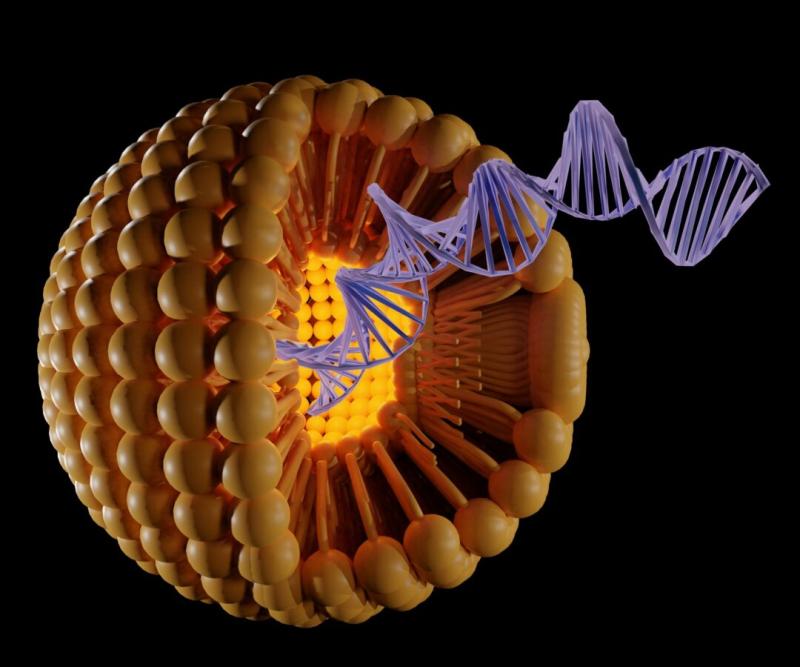What are Liposomes?
Liposomes are spherical vesicles made of phospholipid bilayers. They can act as nanocarriers for encapsulating both hydrophobic and hydrophilic drug molecules. The lipids used for liposome formation are biocompatible and biodegradable. When drugs are encapsulated within liposomes, it protects them from degradation and improves their solubility, stability, and bioavailability.
Advantages of Liposome Drug Delivery
Liposomes offer several advantages over traditional drug delivery methods:
Targeted Drug Delivery
Liposomes can preferentially deliver encapsulated drugs to desired sites in the body by virtue of their unique properties. Ligands or targeting moieties attached to liposomal surface helps them recognize and bind to specific cell/tissue types, thereby ensuring drugs are delivered only where needed. This targeted approach reduces systemic side effects.
Controlled Release
Drug release from liposomes can be modulated by manipulating their composition, size, surface charge etc. Using the right triggers like temperature, pH or ultrasound, drugs can be released slowly over extended periods at the target site, maintaining optimal therapeutic concentrations. This helps improve patient compliance too.
Protection from Degradation
The phospholipid bilayer of Liposome Drug Delivery acts as a protective barrier, shielding enclosed drugs from degradation by enzymes and acids in the body. It allows drugs to reach their site of action in an intact form. Heat or shear sensitive molecules otherwise unstable in circulation can also be formulated into stable liposomal products.
High Payload Capacity
Owing to an aqueous central compartment and lipid bilayers, liposomes can encapsulate both hydrophilic and hydrophobic substances with high efficacy. Large doses of drugs can be delivered without increasing the overall dosage form size. This is an advantage for drugs requiring high concentrations at disease site.
Applications in Cancer Therapy
Liposomal formulations have received FDA approval for several anti-cancer drugs over the years. Doxil, Ambisome and Myocet are some examples. Compared to free drugs, liposomal drugs show significantly higher tumor retention and intracellular accumulation. Reduced systemic toxicity allows safer administration of higher doses for more potent anti-tumor activity. Some liposomal cancer drugs even help overcome drug resistance.
Liposomes in Immunotherapy
Novel therapeutic strategies using liposomes are being explored in cancer immunotherapy. They can ferry immune stimulatory molecules, antigenic proteins or DNA/RNA directly to antigen presenting cells (APCs) resident in lymph nodes, thus improving immune responses against tumors in a targeted manner. This enhances the effectiveness of immunotherapies.
Overall, the versatility and biocompatibility of liposomes make them one of the most successful nanocarriers for targeted drug and gene delivery. Continuous technological advancements will help further expand their applications.
Challenges in Liposome Drug Delivery
While liposomes offer promising solutions to many drug delivery challenges, some areas still need refinements:
Storage Stability Issues
Liposomes tend to be physically unstable formulations owing to issues like aggregation, fusion, drug leakage etc. Correct optimization of composition is required to enhance stability on storage. Stability testing over months to years is crucial before commercialization.
Rapid Clearance by Reticuloendothelial System (RES)
Liposomes circulating freely in blood are readily recognized and engulfed by cells of the mononuclear phagocyte system including Kupffer cells of liver and macrophages of spleen. This leads to loss of long circulation capability. Surface modifications help evade RES uptake to some extent.
Difficulty in Large Scale Production
Current liposome production techniques like thin film hydration, reverse phase evaporation etc. are unsuitable for mass manufacturing. Developing continuous and closed systems for clinical scale production under good manufacturing practice standards is the need of the hour.
Overall, liposome technology has advanced greatly over last few decades, with several products reaching market. But further refinements in formulation strategies, manufacturing techniques and large-scale quality testing processes are still required to maximize its potential and overcome existing bottlenecks. Continuous research in these areas holds promise to develop liposomes as a game-changing drug delivery platform.
Get more insights on Liposome Drug Delivery
